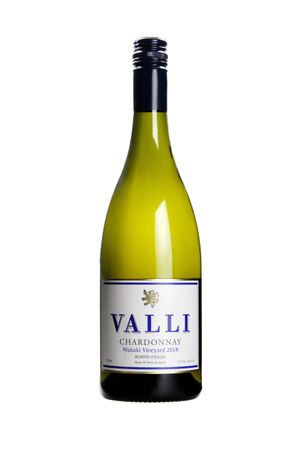Another lockdown, another extension of lockdown, a lowering of lockdown to level 3, a lowering to level 2 for some of us. It's all been a bit unsettling, and much more than a "bit" for those of you in Auckland. If I have ever needed a drink, it is now… although 10 am? It’s a little early. The antidote perhaps, another blog post?
These last couple of months have been frustrating. There were mountains with the best snow on for ages that we couldn’t ski on, there were rivers full of whitebait we couldn’t catch, so you probably have time to read, I had time to write, especially now as the vineyards are fully pruned a full month ahead of our usual finishing date.
The good news - and there is always good news - is that this lockdown coincides with our 2019 Waitaki Chardonnay release and with that release is a moderately technical wine education, if you'll humour me. I'd like to discuss crystals in wine. The best place to start with that is an article from the latest Decanter magazine:
---
Tartrate crystals in wine
Have you ever opened a wine to find small crystals lining the bottom of the cork, glinting at the base of the bottle, or even floating in the wine itself? They’re known as tartrate crystals but they have also been referred to as ‘wine diamonds’. They’re not considered harmful to your health, but they can form naturally in wine under certain conditions.
‘Many people think these clear crystals floating in the wine or stuck to the cork are salt, sugar, sediment or even broken glass,’ said the late, great Gerard Basset OBE MW MS in response to a Decanter reader query in 2016. ‘In fact they are harmless by-products of wine, and some equate their presence as a mark of quality, in that the wine has not been overly manipulated in the cellar.’
If you find crystals in your wine at home, Basset said, ‘Once formed they’ll never disappear, but they won’t affect the aroma, taste or quality of the wine.’ He added, ‘If you find them unsightly, you can either decant the wine before serving or filter it through a muslin cloth.'
Where do wine crystals come from?
Tartrate crystals in wine trace their roots back to tartaric acid, one of the main acids that occurs in wine grapes. Wine diamonds can be present in either red or white wines, and their formation is linked to temperature. ‘When exposed to cold temperatures, the tartaric acid naturally found in grapes binds with potassium to form a compound called potassium bitartrate,’ said Basset. ‘It’s the same as cream of tartar used in cooking.’ Basset added, ‘Many white wines often undergo a cold stabilisation process to remove these tartrates before bottling, but often some are left, ready to crystallise in your cold cellar or fridge.’
Cold stabilisation generally involves cooling the wine down close to its freezing point ‘to force the precipitation of tartaric salts prior to wine bottling’, as researchers writing in the peer-reviewed Foods journal explained last year. Yet this process can also lead to a loss of colour and aroma, said the researchers.
---
Okay, now you have read that you will be wondering where you can get some of these wine diamonds to study. That’s where we can help: Put some of our 2019 Chardonnay in a very cold place for a day or two and you should have some.
I have typed in italics what to me is the most important point of the Decanter article above: 'some equate their presence as a mark of quality, in that the wine has not been overly manipulated in the cellar.' Basically a wine's quality is never improved by the process used to prevent crystal formation, but it can potentially have a negative effect on its quality. By now, you know here at Valli we do everything possible to bring you the very best wines, so it’s only logical we would avoid anything with the potential to take away from quality.
The question will be asked by some of you “Why does this only happen some years and not others?" The answer is a function of two things, both of which are related to mother nature: the wine's natural chemical composition due to a particular growing season and how cold it was over winter.
It’s quite appropriate that the forwarded article was from Decanter magazine as it brings me to the next point: decanters. There is a reason they have been around for hundreds if not thousands of years, and it’s not just to be a very acceptable wedding present, only to sit in a cupboard and gather dust for ever after the special day. It’s so you can separate your fine wines from their sediments and tartrates.
This post not only offers you the Valli wine I drink more of than any other, it provides a little education, some memory exercise ("Honey who gave us this dusty damned decanter?"), as well as an opportunity to test your decanting skills. You can do it!

